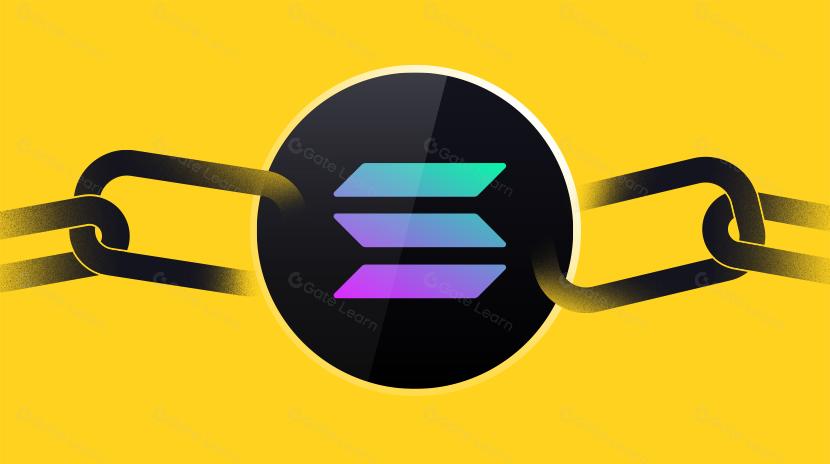BlackRock IBIT: The Most Lucrative Bitcoin Spot ETF
Introduction
As the world’s largest digital asset by market capitalization, Bitcoin has gradually evolved from a niche speculative instrument into a core asset within the global financial system. In recent years, investment methods for Bitcoin have continued to develop. In January 2024, the U.S. Securities and Exchange Commission (SEC) approved the first batch of spot Bitcoin ETFs, opening a regulated gateway for Bitcoin investing. This milestone filled a long-standing gap in investor-friendly crypto products and attracted significant capital inflows from traditional markets.
Among these ETFs, BlackRock’s iShares Bitcoin Trust (IBIT) quickly seized the opportunity with its strong brand reputation and low-fee structure, securing a leading position in the Bitcoin ETF space. This article will explore why IBIT has become the most capital-attracting Bitcoin spot ETF in the market. It will examine its pricing mechanism, fund inflow performance, and future development prospects, while also analyzing the broader investment logic behind Bitcoin ETFs—helping investors gain a deeper understanding of IBIT’s market value and long-term potential.

IBIT is BlackRock’s Bitcoin ETF (Source: https://www.investopedia.com/blackrock-spot-bitcoin)
What is an ETF?
An ETF, or Exchange-Traded Fund, is an investment fund that is listed and traded on stock exchanges. It is designed to track the performance of a specific market index. ETFs combine characteristics of both stocks and mutual funds, allowing investors to buy and sell shares throughout the trading day just like individual stocks. The price of an ETF fluctuates in real time based on the movements of the underlying index it tracks.
The operation of an ETF involves both a primary and secondary market. In the primary market, Authorized Participants (APs) engage in large-scale transactions with the fund manager through a creation and redemption mechanism to help maintain the balance of supply and demand for ETF shares. Individual investors can freely trade ETF shares on stock exchanges in the secondary market. While the trading price is influenced by market demand and supply, it generally stays close to the ETF’s net asset value (NAV).
Since the launch of the first ETF in the United States in 1992, ETFs have become one of the most successful financial innovations in global markets. As a tool for index-based investing, they offer investors a highly efficient, transparent, and cost-effective way to gain exposure to a wide range of assets. Today, ETFs are an essential component of modern investment portfolios.

Key differences between ETFs and mutual funds (Source: https://www.ncfunds.com/wp-content/uploads/2022/04/ETF.pdf)
What is IBIT?
IBIT, or the iShares Bitcoin Trust ETF, is a spot Bitcoin exchange-traded fund issued under BlackRock’s iShares brand—the world’s largest asset management company. It is designed to expose investors to Bitcoin’s price movements without requiring direct ownership of the cryptocurrency. To ensure secure and compliant custody of the digital assets, IBIT leverages institutional-grade custodial services provided by Coinbase Prime.
Approved by the U.S. Securities and Exchange Commission on January 11, 2024, IBIT allows investors to trade spot Bitcoin conveniently through traditional securities markets, just like they would trade stocks. The price of IBIT fluctuates in real-time alongside Bitcoin’s market price, enabling investors to gain returns—or incur losses—based on market trends. It serves as a regulated and accessible option for those seeking Bitcoin exposure via conventional financial instruments.

Spot Bitcoin ETFs approved in the U.S. in January 2024 (Source: https://www.sec.gov/)
IBIT Pricing Mechanism
As a spot Bitcoin ETF, the price of IBIT is primarily determined by the interplay of three key factors: the supply and demand for ETF shares, the real-time price movements of spot Bitcoin, and the arbitrage activities of Authorized Participants (APs). These elements work together to ensure that the ETF’s market price closely tracks its Net Asset Value (NAV). The specific pricing mechanism is as follows:
ETFs are created by the issuing institution and are backed by the actual underlying assets—in this case, Bitcoin. Initially, BlackRock acquires Bitcoin through market purchases or direct transactions with holders, and securely stores the assets in cold wallets with stringent protection measures. Based on the quantity of Bitcoin held, the issuer creates a proportional number of ETF shares and releases them into the market.

How Bitcoin ETFs Operate (Source: https://www.bitgetapps.com/zh-CN/news/detail)
Authorized participants (APs) serve as liquidity providers to ensure that IBIT’s price closely tracks the spot price of Bitcoin. When market demand rises and the ETF price exceeds its NAV, APs can request the creation of new ETF shares from the issuer and sell them on the market, helping to reduce the premium.
Conversely, when the ETF price falls below its NAV, APs can repurchase ETF shares on the market and redeem them with the issuer in exchange for Bitcoin. This arbitrage activity narrows the price gap and drives the ETF price upward. This arbitrage mechanism maintains the dynamic balance between IBIT’s price and the spot price of Bitcoin.
Investing in ETFs vs. Direct Ownership

In summary, individual investors who wish to retain full control over their assets and are willing to manage private keys and navigate market volatility may opt to purchase Bitcoin directly. However, this approach is best suited for those with a solid knowledge base and a strong awareness of risk management. On the other hand, investors who prioritize convenience and regulatory compliance—and who prefer traditional investment channels—may find Bitcoin ETFs a more user-friendly choice. These funds eliminate the need to manage private keys and offer a simpler, more accessible trading process. For institutional investors, regulatory constraints and fund management requirements often make Bitcoin ETFs the preferred route, offering lower operational risk and the added security of professional custodianship.
From an investment style perspective, short-term speculators may favor direct ownership of Bitcoin, which allows greater flexibility to enter and exit the market and take advantage of price fluctuations. In contrast, for those with long-term allocation goals—particularly institutions or individuals seeking steady growth—Bitcoin ETFs are often more appealing. They offer streamlined trading, higher regulatory transparency, and secure asset custody provided by professional institutions.
It’s important to note that while ETF investing simplifies the management process, it usually involves management fees, which may slightly dilute long-term returns. Therefore, when choosing between these two approaches, investors should carefully consider their risk tolerance, level of experience, and investment objectives. Evaluating the trade-offs between returns and costs under each path is essential for crafting a personalized crypto asset allocation strategy.
Why is IBIT Attracting so Much Capital?
1. Strong Brand Endorsement from BlackRock
As one of the world’s largest asset management firms, BlackRock oversees over $9 trillion in assets and has a stellar reputation in global financial markets. Its extensive investment management experience and robust compliance framework provide IBIT with a powerful brand endorsement, giving it a natural advantage in the Bitcoin ETF space. Additionally, as a product under the BlackRock umbrella, IBIT is regulated by the U.S. Securities and Exchange Commission, aligning with the compliance standards expected by traditional financial institutions. This regulatory backing makes institutional investors more comfortable allocating capital to IBIT, fueling its continuous inflows.
2. Meeting Market Demand at the Right Time
Bitcoin, as the highest-valued digital asset globally, has gained significant recognition over the past decade, with its market value soaring accordingly. As Bitcoin continues to enter the financial mainstream, more and more traditional investors seek exposure to this asset class. However, regulatory barriers, security concerns, and high entry thresholds remain major challenges for them. Thus, the demand for a secure, transparent, and regulated channel for Bitcoin investment has remained strong. The launch of IBIT directly addresses this market gap, offering a timely and compliant solution.
Traditional investors—especially institutions such as pension funds and insurance companies—prefer “low-risk exposure” to Bitcoin. That is, they seek indirect access to Bitcoin through regulated financial products. IBIT, as a product backed by BlackRock, perfectly fulfills this demand. Looking ahead, as the crypto market continues to grow, IBIT is well-positioned to drive further institutional adoption of Bitcoin and potentially become a core component in institutional portfolios.

Projected Growth of the Cryptocurrency Market (Source: https://www.businessresearchinsights.com/)
3. Perfectly Timed Market Entry
Beyond its strong brand influence and product advantages, BlackRock has also executed a well-timed marketing strategy aligned with market cycles. Historical data shows that Bitcoin prices typically enter an upward trend around its halving cycles, during which market interest in Bitcoin ETFs tends to surge. BlackRock accurately captured this market momentum and launched IBIT at a strategically optimal time—during peak investor attention. This allowed the product to ride the wave of heightened enthusiasm. As a regulated and user-friendly Bitcoin investment tool, IBIT amplified market FOMO (fear of missing out), accelerating capital inflows and creating a powerful flywheel effect.
4. Product Design Advantages
Compared to other spot Bitcoin ETF competitors, IBIT stands out due to its superior product design. First, it offers a highly competitive management fee structure, reducing long-term holding costs and increasing appeal for institutional and retail investors alike. Second, IBIT operates with an efficient market-making mechanism that keeps it tightly linked to the spot market, allowing investors to trade with narrower bid-ask spreads. Lastly, its arbitrage mechanism ensures that IBIT’s market price closely tracks the spot price of Bitcoin, minimizing premiums or discounts and providing a more stable, efficient trading experience.

IBIT’s cost structure offers a competitive advantage
(Source: https://www.itiger.com/au/hans/learn/LIBRARY/luay2go7ax7oeb83cw8)
5. Broad Client Base
With a vast global client network, BlackRock is dominant in the traditional financial ecosystem. Its client base spans hedge funds, pension funds, sovereign wealth funds, and a wide range of large institutional investors—groups that prioritize secure and compliant investment vehicles.
Compared to other market participants, BlackRock possesses a stronger sales and distribution infrastructure, enabling it to reach capital markets worldwide quickly and rapidly accumulate assets under IBIT. More importantly, the launch of IBIT has effectively built a bridge between traditional finance and emerging digital asset sectors like Web3, offering strong momentum toward the mainstream adoption of Bitcoin.
Capital Inflow Performance
Since its launch, IBIT has demonstrated remarkable capital-attracting power. As of January 2025, the ETF amassed over $50 billion in assets under management (AUM) in just 11 months, setting an industry record and making it one of the most successful ETFs in history. Based on its 0.25% management fee rate, IBIT is projected to generate approximately $112 million in annual management fee revenue—marking a significant new growth channel for BlackRock.
IBIT’s success is reflected in the rapid expansion of its asset base and exceptional trading activity. Data shows that IBIT’s average daily trading volume reaches $1.7 billion, far exceeding that of other Bitcoin ETF products on the market. Reports from institutional sources further highlight that options trading volumes for competing ETFs from Fidelity and Grayscale are only about 1% of IBIT’s volume, underscoring its overwhelming market dominance.
Bloomberg Intelligence analyst Eric Balchunas noted that IBIT reached the $50 billion milestone at a pace five times faster than the second-quickest ETF in history. By comparison, BlackRock’s own iShares Core MSCI EAFE ETF took nearly four years to reach the same benchmark. Nate Geraci, President of consulting firm The ETF Store, even hailed IBIT as “the greatest ETF launch in history.”

IBIT Bitcoin Inflow Trend Over the Past Year (Source: https://www.fxstreet.com/cryptocurrencies/news/bitcoin-investors-pull-333m-from-blackrock)
Looking Ahead: The Future of BTC
In 2024, Bitcoin underwent its fourth halving event, reducing the block reward from 6.25 BTC to 3.125 BTC. This significantly decreased the rate at which new Bitcoin enters circulation, effectively controlling inflation and maintaining its scarcity. Following this halving, Bitcoin’s annual inflation rate dropped to just 0.9%—a level even lower than gold’s long-term supply growth rate—further reinforcing Bitcoin’s role as a scarce asset in the global financial system.
As an algorithmically scarce asset, Bitcoin possesses inherent anti-inflation properties. This makes it an increasingly attractive hedge against fiat currency devaluation and supports its long-term value appreciation. As the world’s largest spot Bitcoin ETF, IBIT has become the go-to vehicle for institutional investors seeking regulated exposure to Bitcoin. Its growing asset base not only reflects strong demand for compliant investment channels but also lends structural support to Bitcoin’s long-term value and accelerates its adoption in mainstream global investment portfolios.

Bitcoin vs. Gold: Inflation Rate Comparison (Source: ARK Invest Big Ideas 2025.pdf)
Looking ahead, as the global financial system continues its digital transformation, Bitcoin ETFs are expected to evolve in structure and strategy. This may include the introduction of futures-based strategies, yield-enhanced ETFs, or multi-asset allocations to meet the diverse needs of investors better and strengthen Bitcoin’s role in global asset allocation. As a key driver in Bitcoin’s institutionalization, IBIT is not only witnessing this transformation but is also poised to become a central hub for digital asset allocation in traditional finance, accelerating Bitcoin’s transition from an emerging asset to a mainstream financial instrument.
Investment Considerations for IBIT
IBIT’s success is deeply rooted in the market’s urgent need for a convenient and secure way to invest in Bitcoin. For years, traditional investors faced challenges such as regulatory uncertainty, high entry barriers, and custody concerns when attempting to gain Bitcoin exposure. IBIT has effectively addressed this gap, attracting a large number of institutional and retail investors, and quickly becoming one of the most influential Bitcoin investment vehicles in the traditional financial system.
However, investors should be aware of the potential valuation premium associated with IBIT. As a product from the world’s largest asset manager, BlackRock, IBIT enjoys a strong brand-driven advantage—yet this may also result in a higher premium than other spot Bitcoin ETFs. Therefore, when allocating assets, investors are advised to compare the latest management fee structures and capital inflow data across different Bitcoin ETFs to optimize the cost-benefit ratio.
From a broader perspective, IBIT’s success accelerates the institutionalization of Bitcoin and signals a new direction for innovation in the asset management industry. As ETF offerings expand to cover more digital assets, the market may soon see innovative products centered on Ethereum, tokenized assets, and multi-asset index ETFs. Investors are encouraged to monitor not only IBIT’s development but also the overall evolution of the digital asset ETF landscape, including regulatory changes and competitive dynamics, to formulate well-rounded strategies and capture emerging growth opportunities.
Related Articles

In-depth Explanation of Yala: Building a Modular DeFi Yield Aggregator with $YU Stablecoin as a Medium

The Future of Cross-Chain Bridges: Full-Chain Interoperability Becomes Inevitable, Liquidity Bridges Will Decline

Solana Need L2s And Appchains?

Sui: How are users leveraging its speed, security, & scalability?

Navigating the Zero Knowledge Landscape
